Back in May, 2022, I visited Andalucia, Spain, reacquainting myself with an old childhood favourite animal of mine… the Iberian Wall Lizard, perhaps more accurately referred to as the Andalucian Wall Lizard. Whenever I visit Andalucia, I make it a priority to photograph these fascinating and amusing reptiles. CLICK HERE for Part I of my amazing encounter with these lizards.
I shot all pictures on an Olympus E-M1X with Olympus 100-400mm f/5.0-6.3
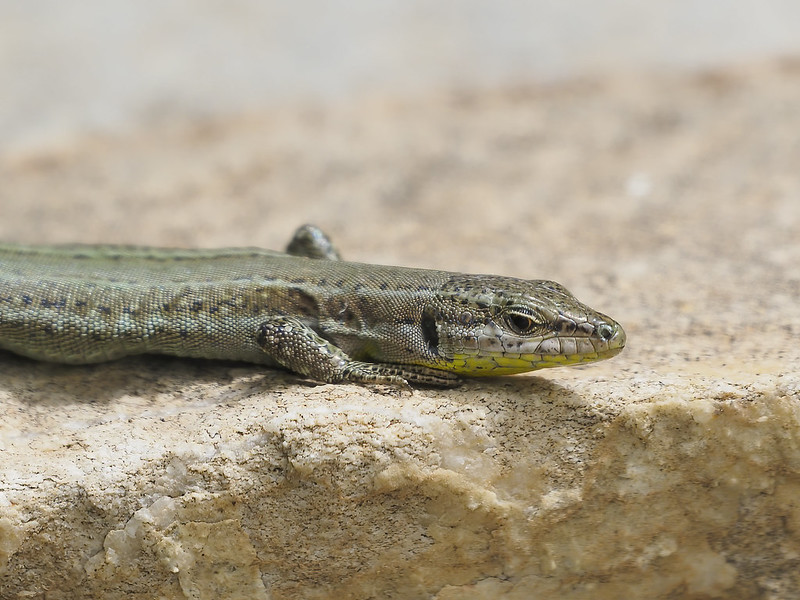
f/8.0 / 1/500 / 400mm / ISO 400
This species has beautiful longitudinal stripes with mottled spots in subtle shades of blue, green, grey and brown.
Males generally are more strongly coloured and patterned than females, and become more brightly coloured in the breeding season.
Iberian Wall Lizards, referred to in Spain as Lagartija, are intriguing and entertaining lizards. I suppose they look like miniature dinosaurs, which instantly draws me to them. Besides, they are slightly larger than the Common Lizards found in South Wales, making them an instant hit! Their different sizes and colours fascinate me. Most are fairly small, slender, somewhat flattened in appearance, with a tail twice as long as their body. Their skin colourations are usually grey or brown but can occasionally be greenish.
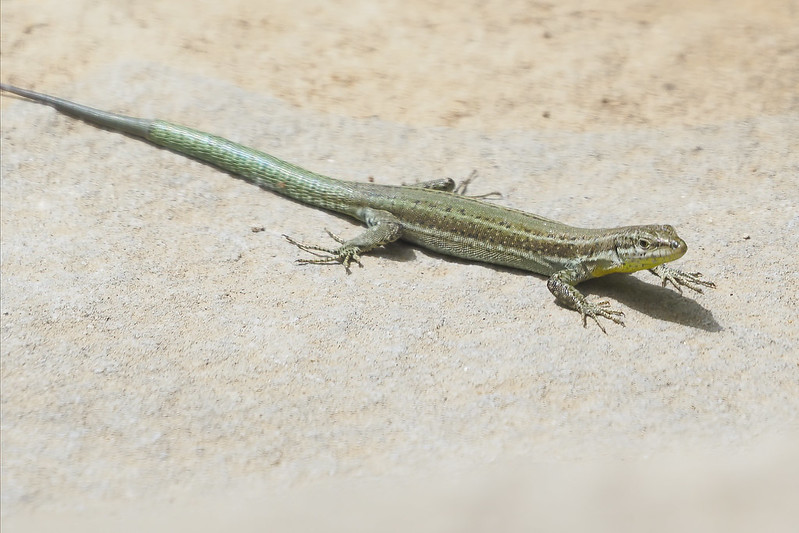
f/8.0 / 1/500 / 400mm / ISO 400
If you look carefully at the end of this lizard’s tale, you can see that it suddenly tapers and changes to a duller colour.
This sudden change in morphology shows a predator has bitten that off. Lizards under the threat of being attacked will voluntarily shed their tail, allowing them to escape while the still moving tail distracts the predator.
Whilst the tail will re-grow around a newly formed rod of cartilage, the re-grown portion is always shorter than the original.
Most individuals have three narrow longitudinal stripes, one along the spine and the other two more distinct and on either side. Sometimes a series of streaks or marks break up their body. Closer inspection reveals that their throats are pale with a scattering of small spots, particularly near the sides, with the belly being usually whitish but also on some occasions pink, orange, red or buff.
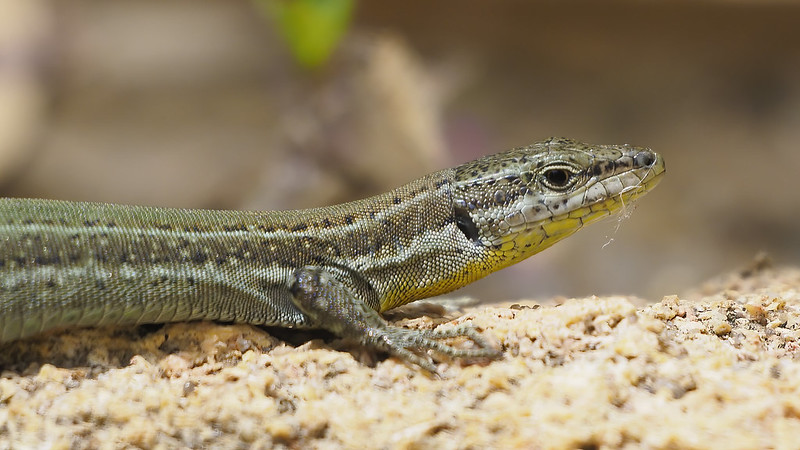
f/8.0 / 1/500 / 400mm / ISO 400
A long focal length lens, such as my Olympus 100-400mm meant I could get near macro like images at 300/400mm within four to five feet of the subject.
Similar images with a macro lens would have required being much closer, which would have scared the lizard off.
Young lizards are striking with their blue or green tails. They seem to vary in appearance according to their age and gender; males being more strongly coloured and patterned than females, and becoming more brightly coloured when trying to impress the females. Such species variation is perplexing, and it’s fair to state that these lizards just don’t care what I expect them to look like!
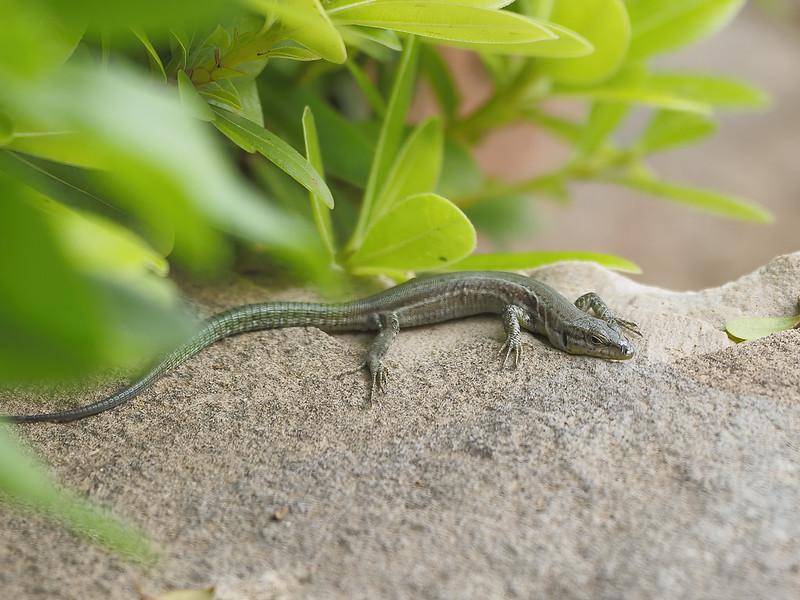
f/6.1 / 1/400 / 261mm / ISO 400
This young adult is totally chilled out while basking in the afternoon sun.
He avoids being spotted by predators by staying absolutely still and close to vegetation,
where if needed he can make a hasty dash for cover.
The lizards come out in the morning and evening when it’s warm but not too hot. They like to bask in the sun, are constantly alert and quickly dart for cover when approached. I often catch sight of them as they skitter rapidly over the ground between hiding places when they are out hunting. They are excellent climbers too and can climb walls and tree trunks, while being superbly camouflaged.
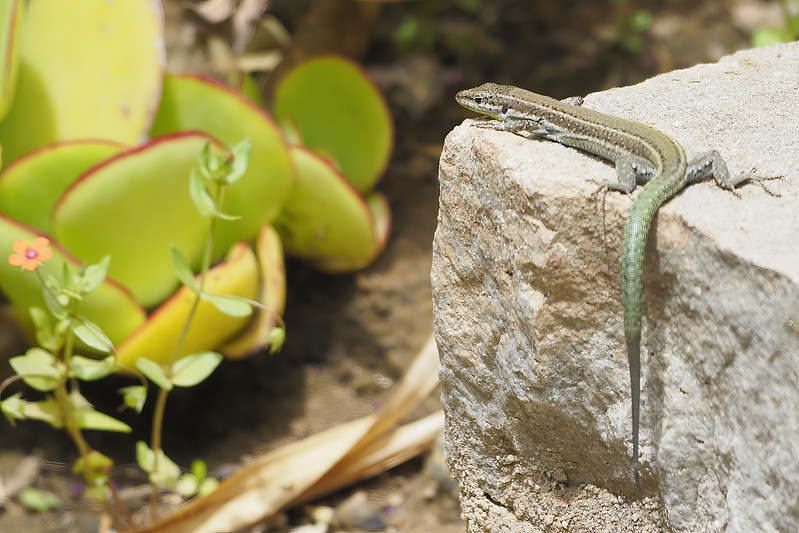
f/8.0 / 1/320 / 253mm / ISO 400
Basking in the sun with tail falling languidly, this lizard is enjoying the heat from the sun-warmed rocks.
Males seem content basking in the evening sun while being alert to any movement from any potential predator. Competing in an out stare contest, without getting too close, is an amusing but futile exercise, as they will always win. It’s hard beating the lizards at this game and I always blink first, while the lizards seldom blink back.
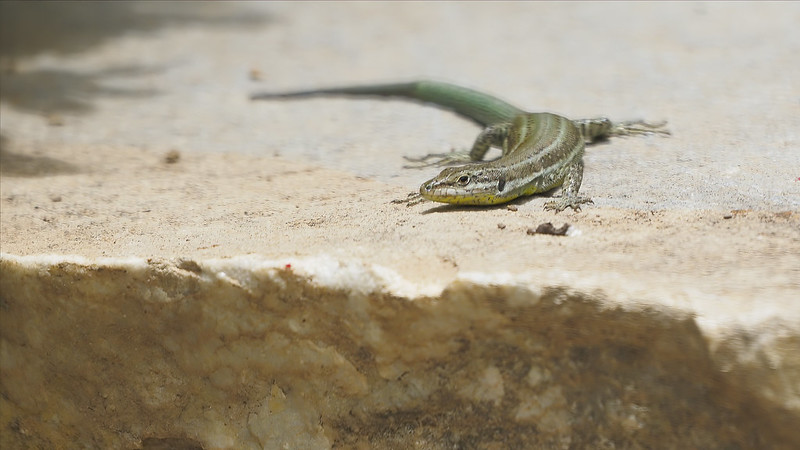
f/8.0 / 1/800 / 400mm / ISO 400
This male is constantly alert and will quickly dart for cover when approached.
Being small he has many predators, ranging from birds to snakes. Even toads can gobble up young lizards.
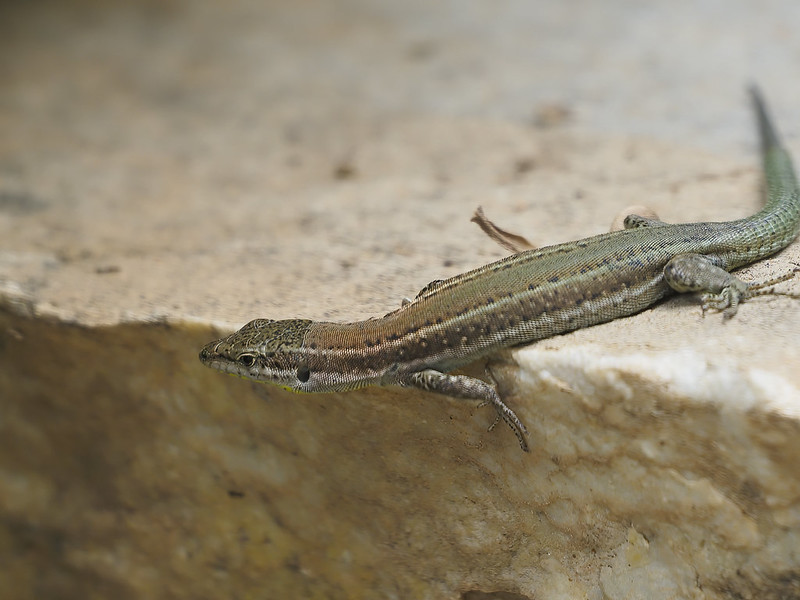
f/8.0 / 1/250 / 400mm / ISO 400
Acrobatic and excellent climbers they are not afraid to balance precariously from high vantage points.
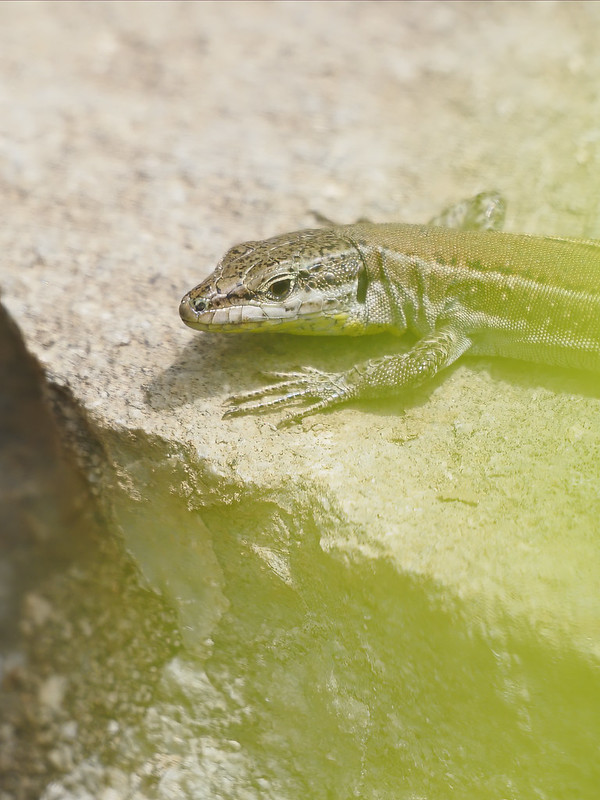
f/8.0 / 1/640 / 400mm / ISO 400
This impressive fully grown specimen poses on the rocky terrain, an ideal habitat for its climbing prowess.
CLICK HERE for my post on Wildlife in a Spanish Villa

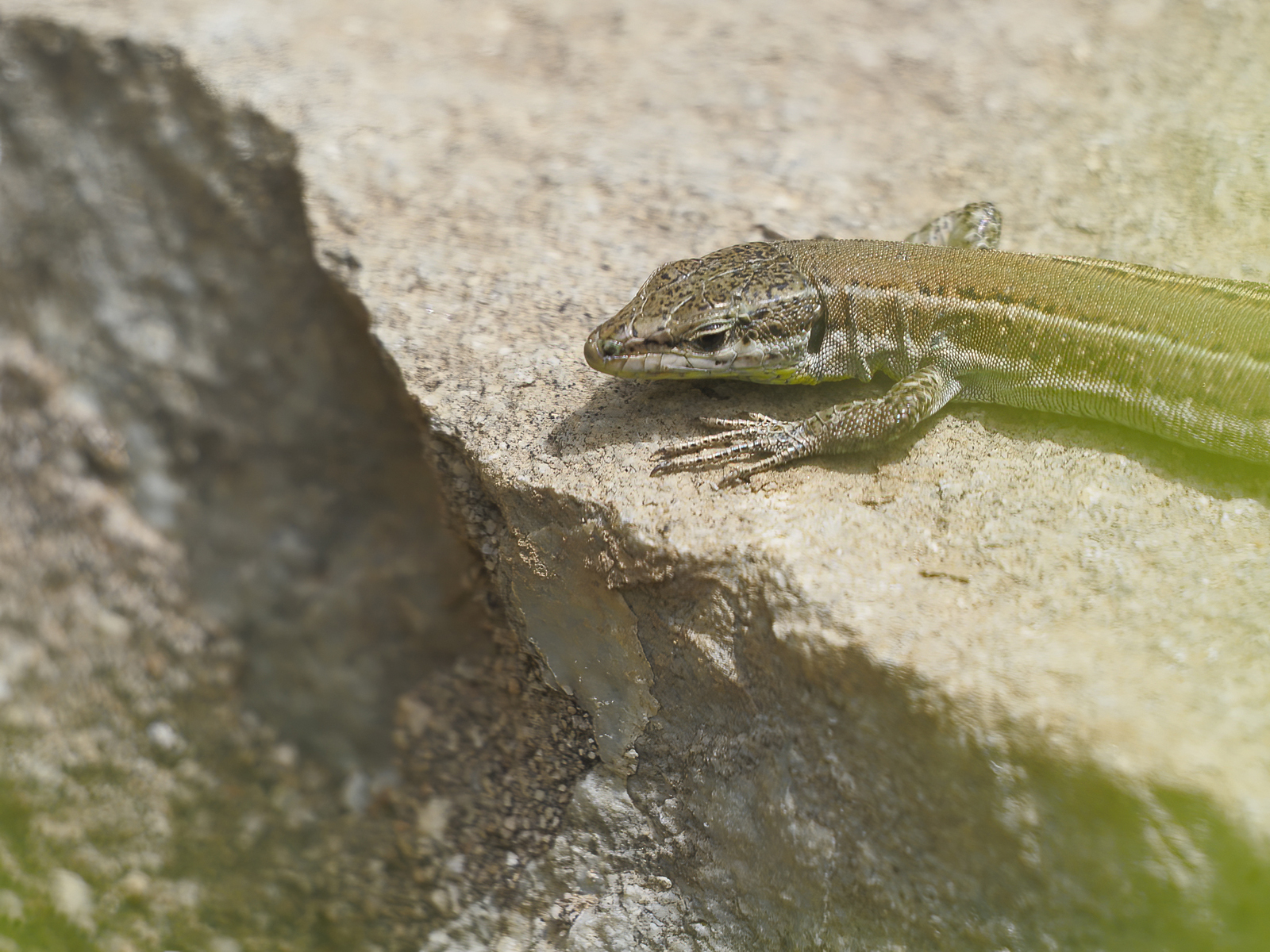
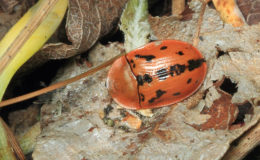
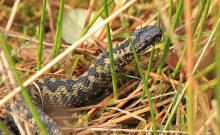
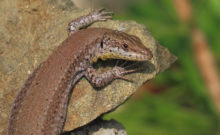
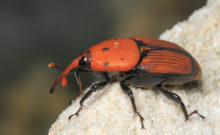
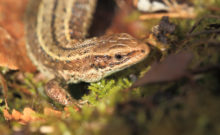
Leave a Comment